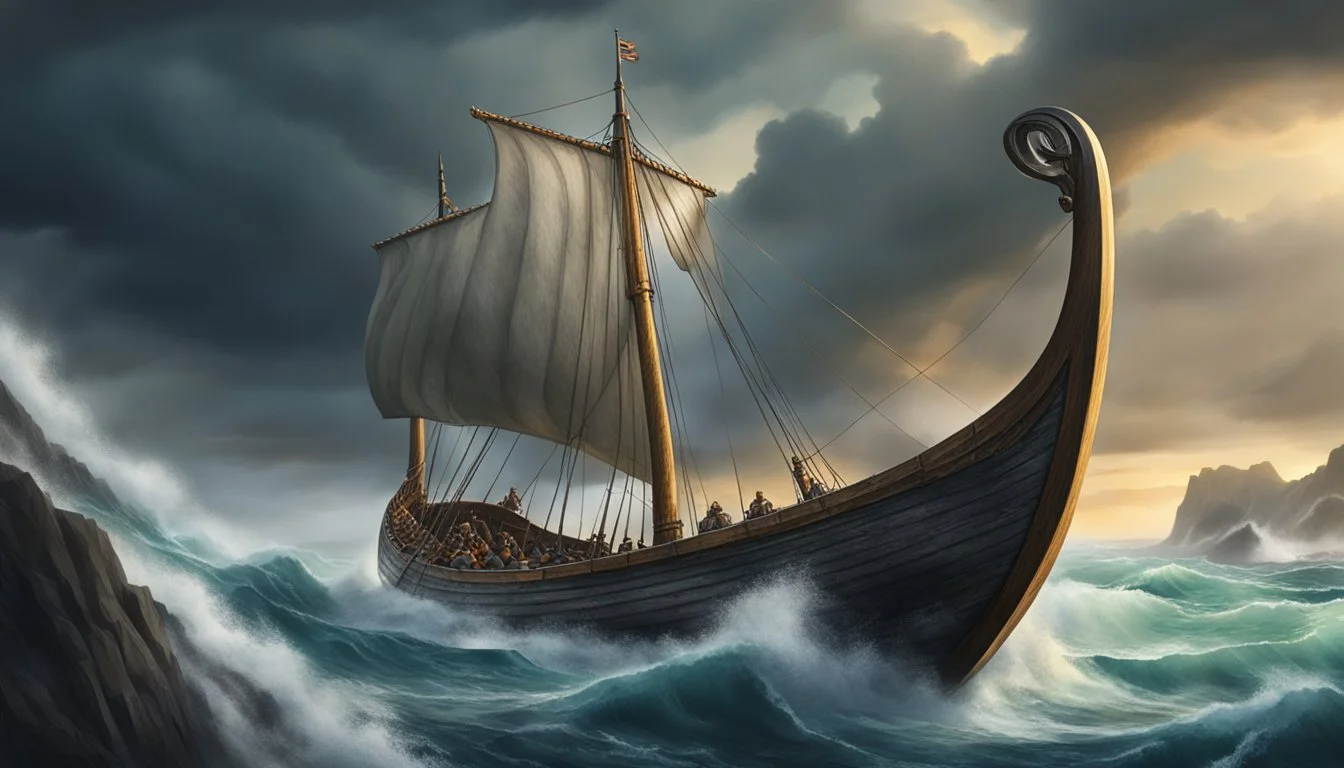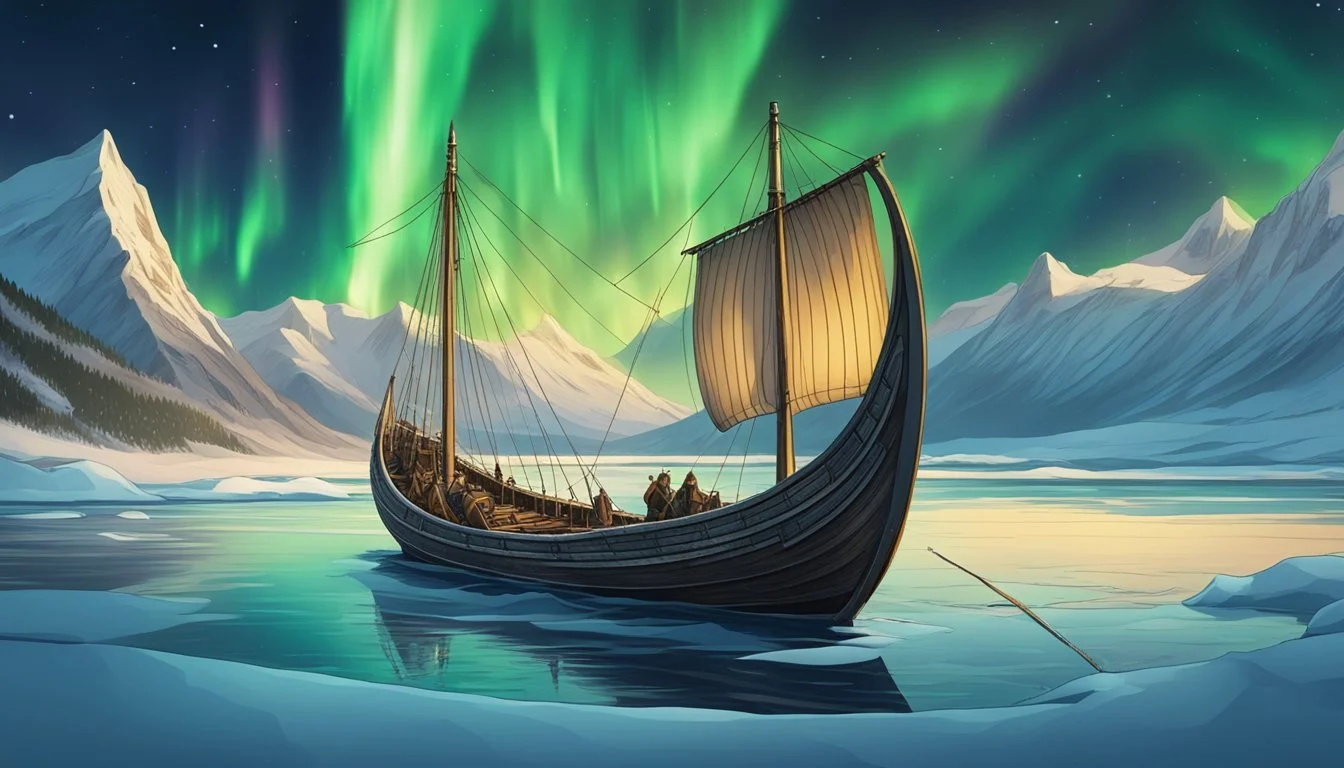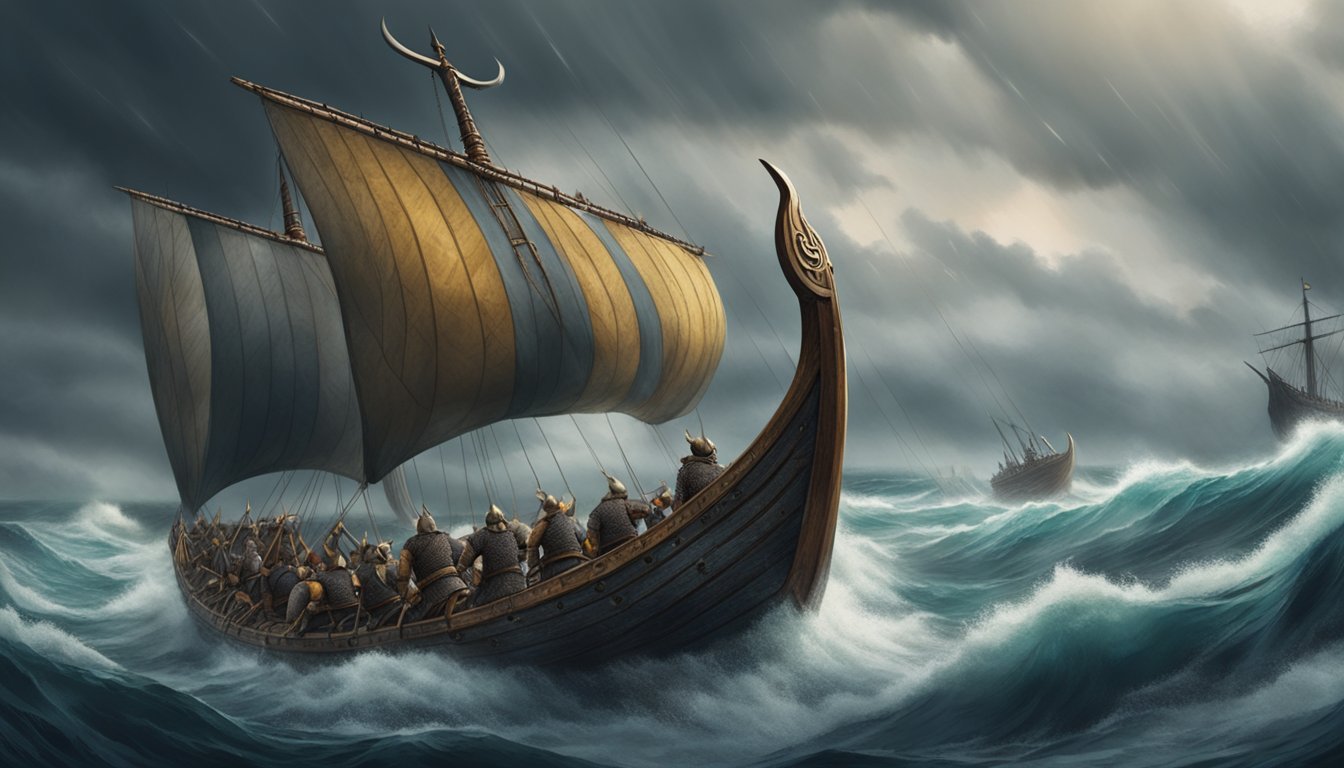8 Documentaries Exploring the Viking Age and its Cultural Impact
A Journey Through Norse History and Legacy
The Viking Age continues to captivate audiences with its tales of exploration, conquest, and cultural influence. From their seafaring exploits to their complex social structures, these Norse warriors left an indelible mark on history. Documentaries offer viewers a window into this fascinating era, combining expert insights with compelling visuals to bring the Viking world to life.
These films provide valuable historical context while dispelling common myths about Viking culture. Through careful research and engaging storytelling, documentary filmmakers shed light on the realities of Viking life, their technological innovations, and their lasting impact on European civilization. By exploring archaeological evidence and ancient texts, these documentaries paint a nuanced picture of a people often misunderstood in popular culture.
1) "The Vikings" (2012) by Neil Oliver
"The Vikings" is a three-part BBC documentary series released in 2012. Presented by historian Neil Oliver, it explores the rise and fall of the Viking Age.
The series traces Viking history from prehistoric Scandinavia to the empire of Canute. Oliver visits key archaeological sites and examines artifacts to shed light on Viking culture and society.
Episode 1 delves into the Vikings' prehistoric ancestors, featuring Bronze Age farmers and ancient war boats. It sets the stage for understanding how the Viking Age emerged.
Episode 2 likely focuses on the height of Viking expansion and influence across Europe. Oliver's expertise brings depth to the exploration of Viking raids, settlements, and trade networks.
The final episode presumably covers the decline of Viking power and the transition to medieval Scandinavian kingdoms. It may touch on the lasting impact of Viking culture on European history.
Oliver's engaging presentation style makes complex historical topics accessible to a general audience. The series combines on-location filming with expert interviews to provide a comprehensive view of Viking history.
2) "Vikings Unearthed" (2016) by Dan Snow
"Vikings Unearthed" is a documentary that explores new discoveries about Viking expeditions to North America. Hosted by historian Dan Snow, the film follows archaeologists using cutting-edge technology to uncover evidence of Norse settlements.
The documentary features satellite imagery analysis by archaeologist Sarah Parcak, which revealed potential Viking sites in Newfoundland. This technique led researchers to a second possible Norse settlement in North America, beyond the famous L'Anse aux Meadows site.
The film examines archaeological excavations at the newly discovered location, providing insights into Viking life and their transatlantic voyages. It showcases the advanced shipbuilding and navigation skills that allowed Norse explorers to reach distant shores.
"Vikings Unearthed" combines historical research with modern scientific methods to shed light on Viking presence in the Americas. The documentary presents evidence of Norse interaction with indigenous peoples and explores the broader impact of Viking exploration.
Through expert interviews and on-site investigations, the film offers viewers a comprehensive look at Viking expansion westward. It challenges previous assumptions about the extent and duration of Norse voyages to North America.
3) "The Norse: An Arctic Mystery" (2015)
"The Norse: An Arctic Mystery" challenges conventional historical narratives about European contact with Native Americans. This documentary explores evidence suggesting Norse explorers reached North America centuries before Christopher Columbus.
The film examines archaeological findings in the Canadian Arctic that point to early Norse presence. It features the work of archaeologist Patricia Sutherland, who uncovered artifacts indicating Norse-Indigenous interactions.
These discoveries include remnants of European textiles and tools found at Inuit sites. The documentary also investigates possible Norse structures on Baffin Island, raising questions about the extent of Viking exploration.
"The Norse: An Arctic Mystery" presents a compelling case for reassessing our understanding of pre-Columbian transatlantic contact. It combines archaeological evidence with historical analysis to shed light on this lesser-known chapter of Viking history.
The documentary offers viewers a glimpse into the far-reaching voyages of Norse explorers. It highlights their potential influence on Indigenous cultures in North America long before the age of European colonization began.
4) "Viking Sagas: The Norse Epic of Kings" (2016)
"Viking Sagas: The Norse Epic of Kings" offers a captivating exploration of Norse literature and mythology. Released in 2016, this documentary delves into the rich tapestry of Viking storytelling traditions.
The film examines the Icelandic sagas, which chronicle the lives and adventures of Norse kings and heroes. These narratives provide valuable insights into Viking culture, politics, and social structures.
Renowned scholars and historians share their expertise throughout the documentary. They discuss the historical context of the sagas and their significance in understanding Viking society.
The documentary also explores the oral tradition that preserved these stories for generations. It highlights how the sagas were eventually recorded in writing during the medieval period.
Viewers are treated to dramatic reenactments of key saga scenes. These visuals bring the epic tales to life, showcasing the grandeur and complexity of Viking narratives.
"Viking Sagas" emphasizes the enduring influence of these stories on modern literature and popular culture. It draws connections between ancient Norse epics and contemporary fantasy works.
5) "Viking Apocalypse" (2011)
"Viking Apocalypse" is a National Geographic documentary that aired in 2011. The film examines a mass burial site discovered in Weymouth, UK, known as the Ridgeway Hill Viking burial pit.
The documentary follows forensic investigators as they analyze the remains of 51 individuals found in the pit. These remains primarily consist of male Viking skulls, suggesting a possible mass execution event.
Archaeologists and researchers in the film work to uncover clues about why Weymouth might have been chosen as the site for these beheadings. They explore potential historical contexts and events that could have led to such a grim discovery.
The documentary provides viewers with insights into Viking history and the complex relationships between Vikings and other cultures during their era. It combines archaeological evidence with historical analysis to paint a picture of this mysterious burial site.
"Viking Apocalypse" offers a unique perspective on Viking-age conflicts and their potential consequences. The film's investigation sheds light on a dark chapter of history, revealing the violent realities that sometimes characterized interactions between different groups during this period.
6) "The Real Vikings Collection" (2016)
"The Real Vikings Collection" is a DVD set released in 2016 that offers viewers an in-depth look at Viking history. The collection includes three separate documentaries that explore different aspects of Viking culture and warfare.
One of the featured documentaries is "Foot Soldier: The Vikings," which examines the seafaring warriors who raided and traded across Europe. This segment provides insight into Viking combat tactics and their fearsome reputation.
The collection aims to present a historically accurate portrayal of Vikings, moving beyond popular myths and stereotypes. It draws on archaeological evidence and expert analysis to paint a comprehensive picture of Viking society.
Viewers can expect to learn about Viking ships, weapons, and daily life. The documentaries also explore the Vikings' impact on European history and their legacy in modern culture.
"The Real Vikings Collection" serves as an educational resource for those interested in Norse history. It combines historical reenactments with expert commentary to bring the Viking Age to life for modern audiences.
7) "The Great Viking Invasion" (2020)
"The Great Viking Invasion" offers a compelling look at the Vikings' expansion beyond Denmark. This documentary combines dramatic reenactments and CGI to bring the Viking Age to life.
Renowned scholars examine the reasons behind the Vikings' decision to leave their homeland. The film explores how their actions significantly impacted European history and culture.
Viewers gain insight into the challenges and motivations that drove Viking exploration and conquest. The documentary highlights the sophisticated maritime technology and navigational skills that enabled their long-distance voyages.
"The Great Viking Invasion" also delves into the social and economic factors that contributed to Viking expansion. It examines the complex interactions between Viking settlers and local populations in various regions.
The film provides a balanced perspective on Viking activities, acknowledging both their warrior culture and their contributions to trade and cultural exchange. Through expert analysis and vivid recreations, it paints a nuanced picture of this transformative period in European history.
8) "Secrets of the Viking Sword" (2012)
This NOVA documentary explores the legendary Ulfberht sword, a weapon prized and feared during the Viking Age. The film investigates the advanced metallurgical techniques used by Viking swordsmiths to create these superior blades.
The Ulfberht sword was notable for its high-carbon steel, a material not commonly available during the Viking era. This documentary showcases how modern-day swordsmith reverse engineers the weapon to understand its unique properties.
Viewers gain insight into the craftsmanship behind these swords and their significance in Viking culture. The film highlights how the Ulfberht became a symbol of status and power among Viking warriors.
"Secrets of the Viking Sword" demonstrates the Vikings' technological prowess, challenging preconceptions about their level of advancement. It reveals how these master craftsmen created weapons that were centuries ahead of their time.
The documentary combines historical research with practical experiments to bring the world of Viking weaponry to life. It offers a fascinating glimpse into the intersection of art, science, and warfare in medieval Scandinavia.
Cultural Significance of the Viking Age
The Viking Age profoundly shaped European history and left an enduring mark on modern culture. Norse influence can be seen in art, literature, language, and popular media across the world today.
Influence on Modern Societies
Viking heritage permeates many aspects of contemporary life. Norse mythology has inspired countless books, films, and TV shows. Marvel's Thor comics and movies draw heavily from Viking lore. Popular video games like God of War and Assassin's Creed: Valhalla immerse players in Norse-inspired worlds.
Viking symbols and aesthetics appear in fashion, jewelry, and tattoo designs. The Norse runic alphabet features on everything from clothing to home decor. Many English words have Old Norse origins, including "sky," "anger," and "husband."
Scandinavian design principles, emphasizing simplicity and functionality, trace back to Viking craftsmanship. This aesthetic influences modern architecture and furniture design globally.
Legacy in Scandinavian Art and Literature
Viking culture forms the backbone of Scandinavian artistic traditions. Medieval Icelandic sagas preserve Norse myths and legends, serving as a primary source for Viking history and culture. These tales continue to inspire modern Scandinavian literature and poetry.
Norse mythology features prominently in paintings by artists like Peter Nicolai Arbo and Mårten Eskil Winge. Viking motifs adorn traditional Scandinavian folk art, including wood carvings and textile designs.
Modern Scandinavian music often incorporates Viking themes and instruments. Folk metal bands like Amon Amarth and Wardruna blend ancient Norse elements with contemporary sounds.
Scandinavian museums showcase Viking artifacts, keeping Norse heritage alive. Annual festivals across the region celebrate Viking culture through reenactments, crafts, and traditional foods.
Historical Context of Viking Documentaries
Viking documentaries have evolved significantly over time, reflecting changing historical perspectives and research methodologies. These films play a crucial role in shaping public understanding of Norse culture and the Viking Age.
Accuracy and Representation
Early Viking documentaries often perpetuated stereotypes of barbaric raiders, focusing primarily on violent conquests. As historical research advanced, films began presenting a more nuanced view. Modern documentaries like "Real Vikings" (2016) separate myths from facts, offering a grounded portrayal of Viking life and culture.
Recent productions utilize archaeological evidence and expert analysis to recreate Viking daily life accurately. They explore topics such as trade networks, technological innovations, and social structures. This shift has led to a more comprehensive representation of Viking society, including the roles of women and the importance of agriculture.
Impact on Historiography
Viking documentaries have significantly influenced historical scholarship. They've popularized new archaeological findings and theories, sparking public interest in Norse studies. This increased attention has led to more funding for research and excavations.
Documentaries have also challenged long-held misconceptions about Vikings. Films exploring their navigation techniques and far-reaching explorations have reshaped our understanding of Viking maritime capabilities. By presenting diverse aspects of Viking culture, these documentaries have encouraged historians to adopt a more holistic approach to studying the Viking Age.
The visual medium has made complex historical concepts more accessible to the general public, bridging the gap between academic research and popular knowledge.




